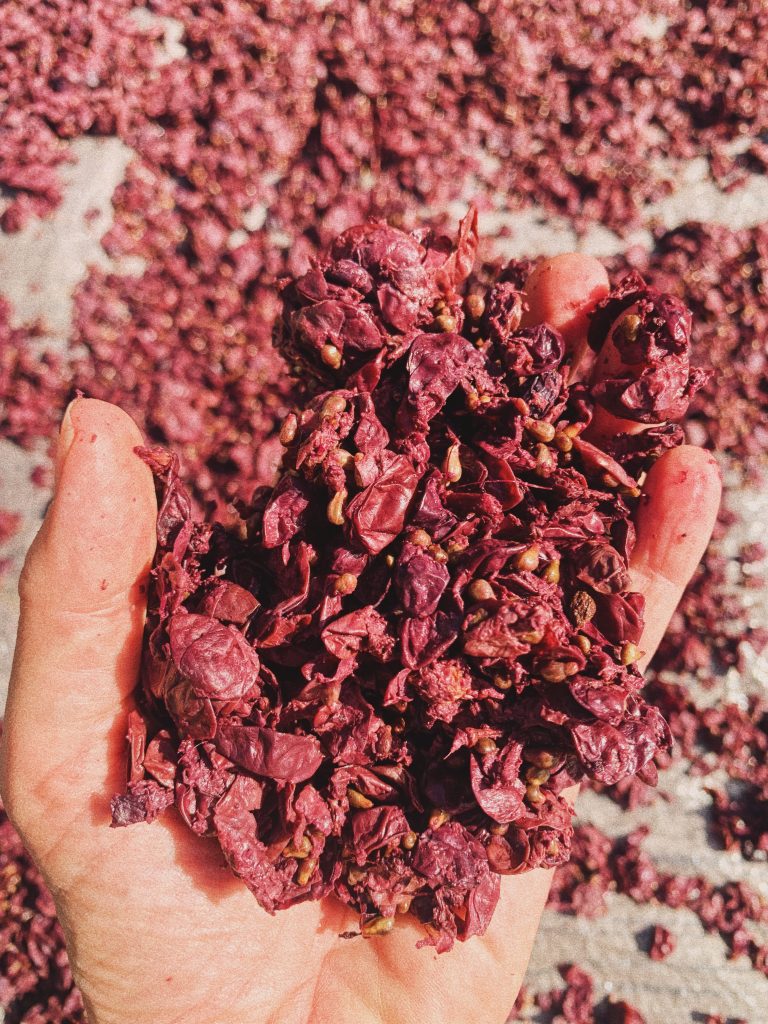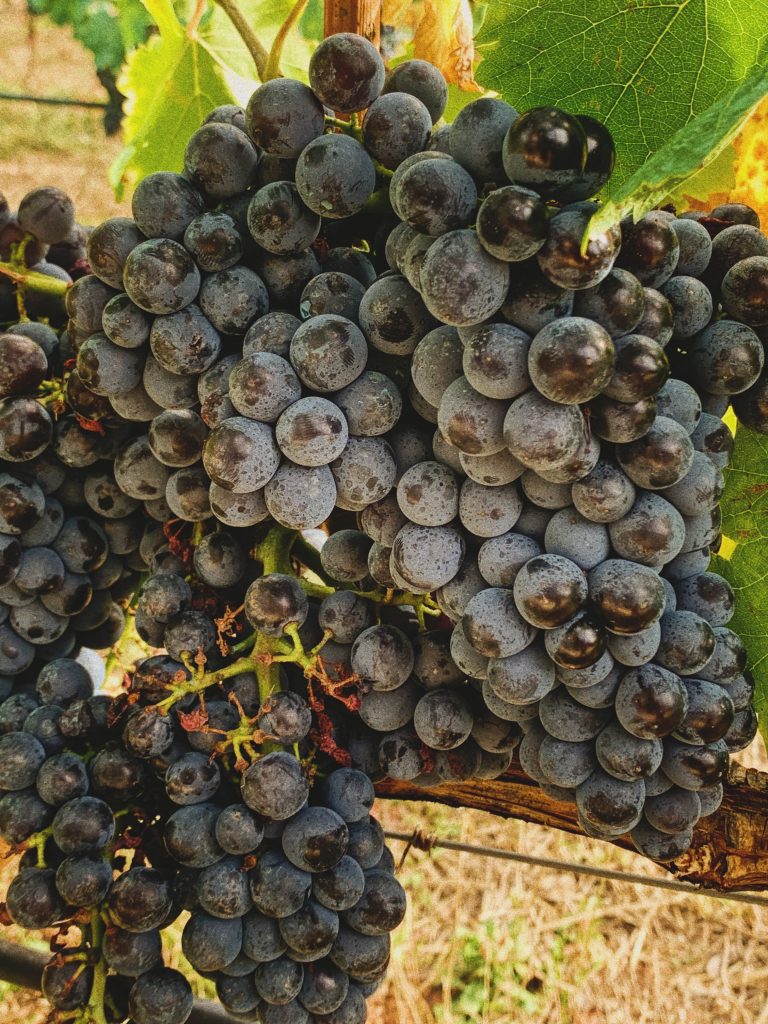
If your answer is something like “a waste of good wine,” well, we get that: diverting potentially great wine into bio-based wearables sounds like a crime – even if, in some ways, it is a neat encapsulation of France’s national personality and its premiere exports.
But the truth is that our grape leather isn’t actually made from siphoned wine grapes – it’s made from discarded stalks and skins and all the kinds of things you’d be less than thrilled to find lurking in your freshly-opened bottle.
It’s less a “waste of good wine,” than it is something more like a good wine’s waste.
Okay, it isn’t quite the beginning: before grapes are picked, they’re planted, grown and expertly nurtured by vignerons passionate about cultivation. To skip that and go straight to imagery of a bountiful cornucopia of vine-plucked fruits is to do their work a disservice. After all, without their knowledge and their skills, the grapes we need would either never have been planted or left to wither and die out in the field. Neither of which works for our purposes.

So, first and foremost, here’s to the vignerons that make it all possible. And if you’re curious as to whether that respect is mutual – whether grape growers often endowed with generations of tradition are keen on the idea of something which subverts that tradition – we assure you that the answer is not only a resounding yes, but also a genuine embrace of change.
Planet of the Grapes founder Samantha Mureau pins this down to a genuine love for their produce: “They are really excited by the concept, and it is so wonderful to hear their enthusiasm for the idea that their grape marc will live on and into a beautiful product that can be worn by someone,” Mureau explains, adding that, in her experience so far, “They also really love the idea that the grapes they have been looking after and nurturing throughout the year is put to good use in a really innovative way.”
It’s something of a symbiotic relationship – traditional in its own way. After all, there’s little more time-honoured custom in any kind of farming than the wholistic, “nose-to-tail” approach. (Although, of course, no noses or tails are used in this particular process.)
But back to the harvest. How do we know that the grapes are going to make good leather? Surely just because they’re primed to make great wine – a process refined and handed down over centuries, if not millennia – there’s no guarantee that, as part of a much newer and far less tested production process, they’ll make a great material?

“The Provencal wines, in particular the rosé, for which Provence is well known, are incredible for high quality wines – and now for a grape leather alternative too,” Mureau explains. “We use the grapes from the white, red, and rosé wines, and specialities here in Provence that we work with for now are Cinsault, Rolle, Clairette, Syrah, Grenache and Cabernet. They are all organic, which is really important to us as it’s a contrast to the chemical-laden raw materials that the fashion industry relies on today.
All of which sounds great for making wine – and if you’ve ever had Provençal wine, then you know that’s true – but surely when it comes to waste, it’s numbers that count above anything else?
We could rhapsodise all day (and night) about the difference in flavour and aroma – about tannins and citrus notes – but, at the end of all that, when it comes down to the finished product way down the line, we know that no one’s planning to quaff their grape leather loafers. (Although it wouldn’t hurt to give them a sniff.)
“Yield will be important to us in the future,” Mureau confirms, “for now, the grape waste – or marc, as it is more commonly known – is bountiful!”
But numbers on a scale still don’t tell the whole story: “For now we have had good harvests,” Mureau continues, noting that “good” doesn’t only mean plentiful, but also includes characteristics like the right levels of sugars and the right proportion of tannins.
“These,” Mureau says, “are the attributes we need to be able to grind the grapes into fine powders or use for the natural colour of the grape-leather material.” But, if that sounds familiar, it’s because they’re also the same qualities needed for making good wine.
After all, it seems that what makes great grapes not only makes great wine, but also makes great waste. And great waste has even greater potential. And that’s what Planet of the Grapes is all about.
All of which leaves only one question – the age old dilemma: “red, white, or rosé, Monsieur ou Madame”?

